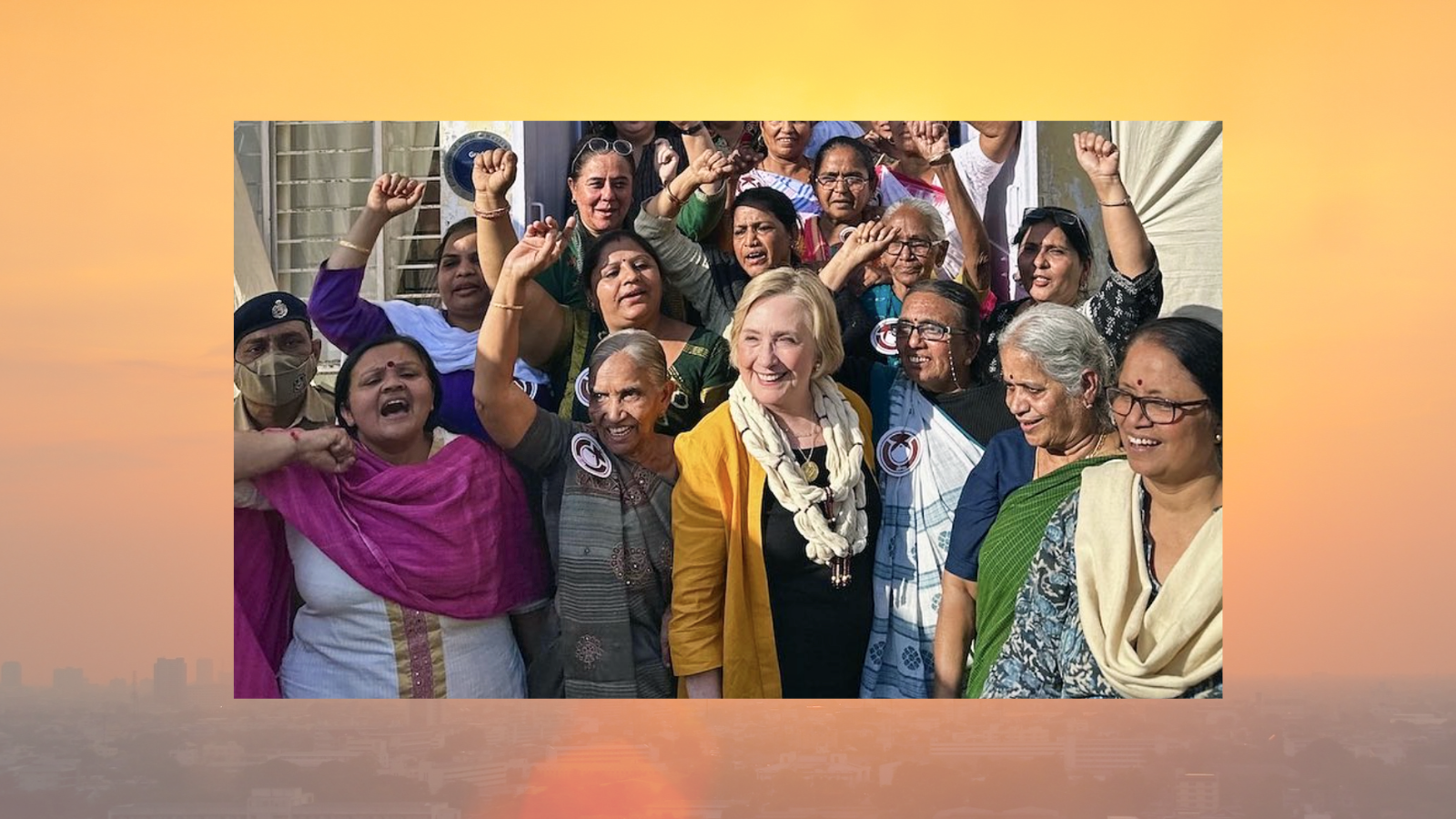Why should COP28 prioritize extreme heat resilience? A guest feature from former President Felipe Calderón
By Felipe Calderón Mon, Dec 4, 2023
As world leaders meet in Dubai for COP28, Arsht-Rock’s Global Ambassador for Heat Action and former President of Mexico Felipe Calderón calls for cities and nations to accelerate action on extreme heat resilience worldwide.
I was traveling with my wife and my baby daughter in the south of France in the late 90’s. My brother-in-law was studying there and having a baby, and we came to assist them. We couldn’t stand the heat in the modest room without air conditioning where we were staying. We acted by instinct and asked for guidance in the hospital where my niece was going to be born. We were very careful. We provided our daughter with hydration and placed her under the shade. A few days after, I read in the press about the thousands of people who died because of this terrible heat wave. I was aware something serious happened, but also skeptical about the numbers. Later on in my life, after having been President of Mexico and committed to climate for years, I discovered the devastating effects of extreme heat thanks to Arsht-Rock. It was then that the memories from that trip to France came back vividly, and it was a lightbulb moment for me.
I was shocked to learn that extreme heat kills more people than all other climate-driven hazards combined. Few people know about its deadly effects, since heat is not as visually shocking as hurricanes, floods, or forest fires. This is why it is called the “silent killer.” Yet approximately 489,000 deaths worldwide were attributed to heat in 2019, and those numbers are likely higher today as the planet continues to heat up.
A new chapter: Global Ambassador for Heat Action
I was intrigued by these facts as I became Arsht-Rock’s Global Ambassador for Heat Action. The question that came up was, in view of much solid evidence about the devastating effects of extreme heat, why most governments, even those committed to the climate cause, are not taking this issue more seriously and responding accordingly?
In the end, as Jeff Goodell puts it in his recent book The Heat Will Kill You First, heat is the prime mover of the climate crisis, and “the climate impacts you hear about most often, from sea-level rise to drought to wildfires, are all second-order effects of a hotter planet.”
According to the UN’s World Meteorological Organization, the first week of July of this year was the world’s hottest on record. Last June, all thirty-two Mexican states experienced an unusually long and intense heat wave. Twenty-two of them had temperatures rise above 104°F (40°C) for several days, while in Mexicali and Yaqui Valley, temperatures reached 122°F (50.6°C). The heat wave claimed more than 100 lives in just a few weeks, but this figure is most likely underestimated as medical records and authorities do not always attribute casualties to heat.
Every year the situation worsens due to the increasingly devastating effects of global warming and climate change, and this is visible in all regions of the world. Early this year during the Southern Hemisphere summer, parts of Australia hit temperatures close to 123°F (50°C), while more than 40 bushfires across New South Wales were a serious threat to one-third of Australians.
Extreme heat no longer affects only those places that traditionally have hot temperatures. Last summer, the world was shocked by witnessing London hitting 104°F (40°C) and the Luton Airport’s runway being shut down because it was melting. Nowadays, extreme heat is a greater threat in those places that are not prepared for it. Many countries lack equitable and accessible cooling in homes. In the United Kingdom, less than 5 percent of homes have air conditioning.
The way forward for climate resilience

The world is facing a public health crisis. Every person on the planet is at risk of the impacts of extreme heat. The human body’s ability to regulate its temperature is hampered when exposed to hotter than average conditions, leading to heat stroke, heart, and kidney failure, just to name a few. Extreme heat disproportionally affects the most vulnerable populations like the elderly, unhoused people, outdoor workers, women, and children. It can also cripple the economy and jobs.
Still, most leaders across the world haven’t woken up to the seriousness of extreme heat, and I think it is because we are still trying to cope with the comprehensiveness of climate change without properly addressing the specificity of its effects. Upon digging into the issue, one can find that extreme heat-related deaths are totally preventable; nobody should die because of heat. We must demand urgent global mobilization in accordance, since solutions are available.
Several cost-effective measures can be implemented, particularly in cities where the problem is more severe due to the urban heat island effect. From developing cool roof programs to lower indoor temperatures to tree planting initiatives that provide shade and capture carbon, many cities are finding easy-to-implement solutions to safeguard their citizens’ lives.
Innovation is key. Heat waves should have early warning systems as hurricanes have had for many years. Giving heat waves a name and category, alerts the population in a timely manner and allows proper emergency responses. Local governments can provide community shelters with air conditioning, place hydration points in different parts of cities, register vulnerable populations, like older people who live alone, and implement other measures that are essential to face this reality.
By implementing these kinds of actions, cities are taking bold steps and testing solutions that should be further refined, expanded, and replicated in close partnership with all sectors of society to tackle the effects of extreme heat. National governments should follow suit. COP28 can become an ideal space to trigger multilevel action to address heat.
I have joined a movement to encourage global leaders to embrace the heat agenda and deploy efforts and resources to effectively tackle extreme heat-related risks. Above all, we must accelerate the steps to reduce greenhouse gas emissions. The world is still far from the trajectory that will allow us to avoid a climate catastrophe in this century. Temperatures will keep rising as an irreversible effect of climate change. Taking serious action to cut carbon emissions is the only way to reduce the pace with which the “silent killer” expands its catastrophic consequences.


